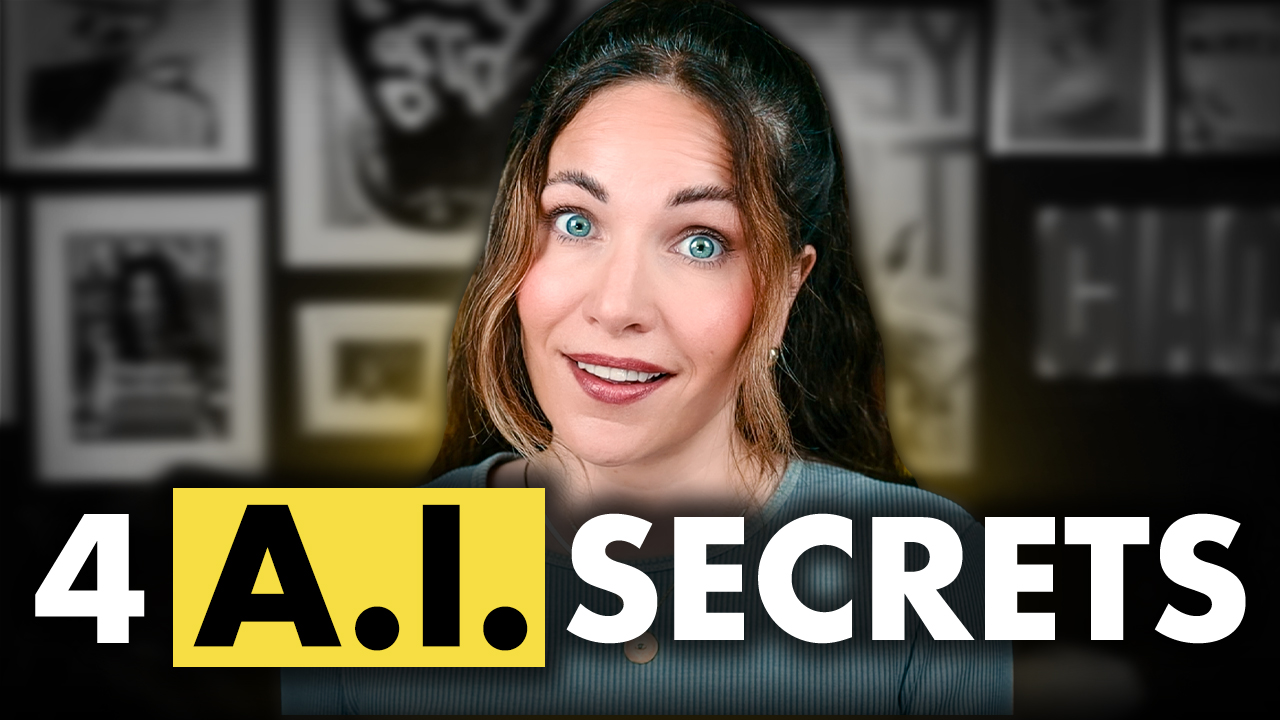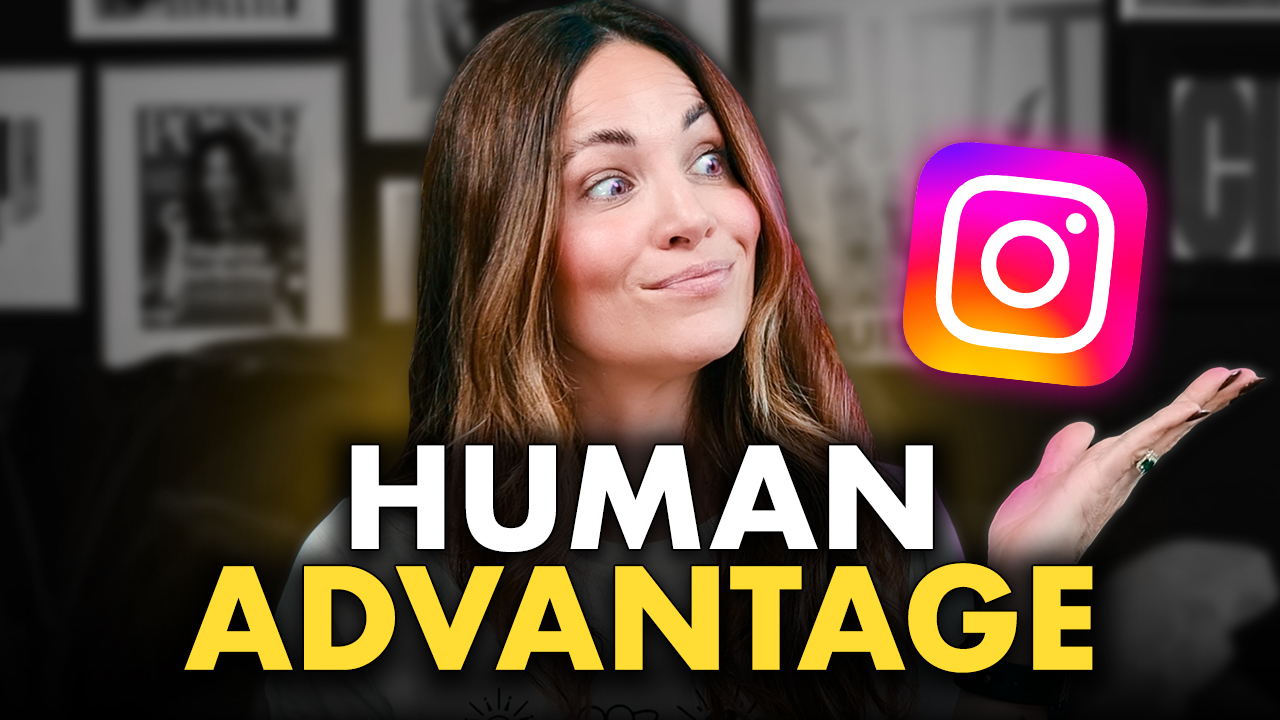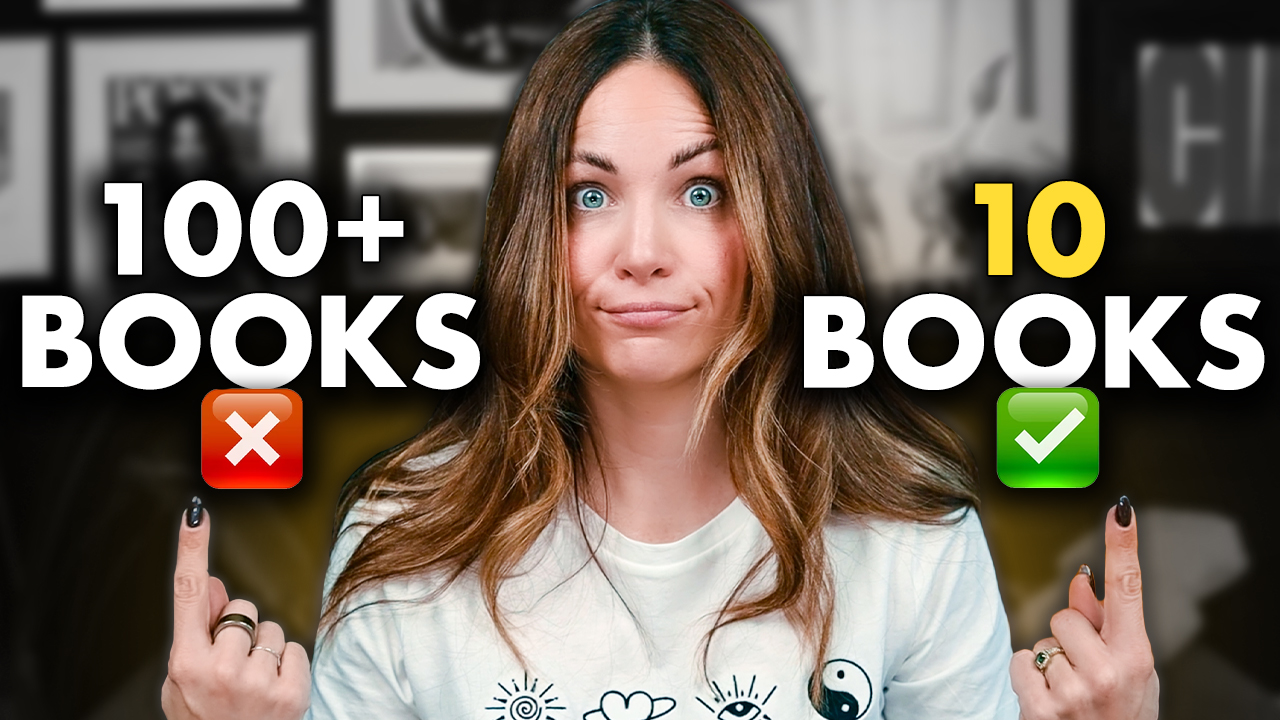Writer’s block is no fun – especially when you have a big sales page to complete and a looming deadline ahead! So in this article, I’m sharing five of my go-to copywriting prompts and exercises that help me get started!
Hey guys, it’s Alex. Welcome back!
Now as a copywriter or creative entrepreneur, I don’t need to tell you what it’s like to have a big sales page you need to complete and a looming deadline ahead and you sit down at your computer and…. nothing.
Copywriter’s block is the real deal… and sometimes the more you have to do and the longer you put it off, the worse it gets!
Despite all the templates, formulas and tools available online, I’m still guilty of often sitting on a sales page for way longer than I should because I can’t seem to ignite that creative spark!
For such an important (and challenging) piece of copy, where do you even start?! It can seem like an impossible task when you’re staring at a blank page and that flashing cursor.
So in this post, I’m sharing 5 of my go-to copywriting prompts and exercises that help me get started writing a high-converting sales page.
For more copywriting tutorials to strengthen your skill and ignite your creative flow — you can count on me for guides, examples, and weekly videos over on my YouTube Channel. So if you’re not already part of the Posse, all you need to do is subscribe. Next week I’ll be sharing the BIGGEST mistakes I see people make when writing sales pages, and you won’t want to miss it.
Alright now, let’s start with copywriting prompt number one!
1. The USP Statement Generator
The magic ingredient of any sales page is the unique selling proposition or USP. This is a statement that communicates your big promise and the one benefit that makes your product stand out.
At its core, a USP should quickly answer the question “Why would someone buy from you over your competition?”
A specific, clear and consistent USP gives you, as the copywriter or business owner, a strong theme across all communications and helps guide marketing decisions. That’s why it’s something that should be established well before any campaign or sales page is written.
It becomes the guiding light, the key concept you’re trying to get your prospects to believe and understand.
A great USP clearly defines who your product helps, how and why.
Which brings me to the simple fill-in-the-blank USP Statement Generator that I created to help my students come up with a clearly defined USP as a starting point for their sales pages.
It goes like this…
[Product] helps [audience] with/who [problem] achieve/get [benefit] through [unique solution].
While this statement might not ever go in your copy exactly as it’s shown, and you may change up a few words, it’s a very helpful exercise to expedite the sales page writing process.
It gives you a clear direction in which to point your pen. It helps you answer the question, “Ok. What am I trying to say here? What do I need people to know about my product in order to make a purchase?”
Here’s an example of my USP Statement for my copywriting coaching program…
The Copy Posse Launch Pad helps aspiring copywriters, who have no idea how to start, write a complete and high-converting copywriter portfolio through personalized guidance, coaching and support.
If you want to see the final sales page in action, check out my Copy Posse Course here.
Alright, moving on to prompt #2…
2. The Pain-Problem-Pain Loop
It is scientifically proven that humans are more motivated to avoid pain, than gain pleasure.
And as a copywriter, you know this. It’s important to address and empathize with your customer’s pain in your sales page so they believe you can actually help them overcome it.
But careful though… a common mistake copywriters make is confusing pain with the problem. The problem is not the pain, the problem is what CAUSES the pain.
Simply describing the problem will make your reader think… “Yeah, I know that already. That’s why I’m here.”
It’s like selling a weight loss product and constantly telling people they are overweight. It’s a bit cringey.
Plus, there’s only so much you can say to someone about that ONE overarching problem. How many different ways can you tell someone they need to lose weight?
But if you first focus on the core emotions your prospect is feeling, it will allow you to explore the more specific issues they are experiencing as a result of the larger problem at hand…
And, ultimately, go deeper into understanding their pain.
An easy exercise to help you with this is my fill-in-the-blank Pain-Problem-Pain Loop. The goal is to illustrate a bunch of believable and relatable scenarios that speak to what your prospect is struggling with… and how that might show up in their daily lives.
It goes like this…
“You are [negative emotion/experience/pain] because [specific problem] and, as a result, you [negative emotion/experience/pain].
So, using the weight loss example again, here’s what that might look like….
“You are feeling anxious because your clothes no longer fit and, as a result, you are embarrassed to go out with friends”...
And then you continue through the Pain-Problem-Pain Loop…
“You are embarrassed to go out with friends because you don’t want to feel judged by your weight gain and, as a result, you feel lonely.”
“You feel lonely because your skinny friends won’t understand what you’re going through and, as a result, you feel frustrated.”
“You feel frustrated because you’ve tried so many different diets and none of them seem to work, and as a result, you feel helpless..”
See how much deeper I was able to go into this customer’s emotional experience as a result of the one big problem they’re dealing with? Even though this may feel redundant or repetitive at times, the goal of this is to keep going through the loop until you have a long list of emotions and specific problems your customer might be experiencing.
After you’ve done this multiple times, you can select the most poignant pain points to integrate into your copy. Alright, number 3….
3. The Feature-To-Benefit Converter
So perhaps you need to write a sales page for a product that has many features, parts or steps to highlight…
Well, a good place to start is to list out all of the features or parts your product has, or the complete step-by-step framework if it is, say, a digital program.
But, you don’t want to stop there!
Another big mistake people often make on their sales page is to put all of the focus on the product features, and completely neglect the benefits.
Here’s a quick distinction between these two concepts if you’re new to my blog…
Features tell people WHAT your product or service has or is. Whereas benefits describe WHY they would want to buy your product based on the outcome they’ll experience.
It can be tricky to turn your features into benefits so that’s why I created the super simple Feature-To-Benefit Converter…
So, you start with one of the features you listed.
For example, say that feature is “batteries included” on a children’s toy.
Now let’s turn that into a benefit using just 5 easy questions…
- Why is this feature notable? Well, It’s Ready To Use.
- What problem does this feature solve? Extra cost/Extra Trip to the store.
- What is the core pain point that this problem creates? Frustration/ Disappointment/Anger/Upset Child.
- When does this matter most? Christmas Morning /Birthday.
- Why does your customer need this? Relieve/Remove Stress/Peace of Mind.
So what’s the benefit of “Batteries Included”? …
Have a stress-free Christmas Morning with your family at home. Voila!
Now here’s a bonus tip…
By simply using three little words “So you can…” you can beautifully describe each feature as a benefit on your sales page….
Batteries included…. so you can have a stress-free Christmas Morning with your family at home. Now repeat this with exercise with each one of your product features!
To help you out, you can grab your copy of my Feature to Benny converter here. Moving on to #4, what I call…
4. The No-Delete-Cheat-Sheet
If you’ve tried the first three exercises and are now struggling to weave your USP, pain points and benefits into compelling sales copy, here’s a fun exercise…
Open a new document or sheet and write whatever comes to your mind as fast as you can for ten to twenty minutes straight without stopping and whatever you do – DO NOT TOUCH THE DELETE KEY!
This practice, known as Freewriting, was developed by English Professor Peter Elbow in the 70s and has made its way into writing classrooms everywhere
It might take getting used to because there will be resistance at first. The editor in us will always try to interfere and provide feedback as we write. But the point is to leave the polishing, correcting, and structuring till after you’re done. No matter how many grammatical errors or aimless meandering it may entail.
By removing any quality filters and completely minimizing any gaps between thought and action, you’ll actually tap into the most creative and emotional part of your brain, and leave your inner critic out of it. Learning to get your thoughts onto paper in this way is an important part of strengthening your writing game… and it’s super fun!
Lastly, number 5…
5. The Copy Cat
No, I’m not telling you to swipe someone’s work. I’m not endorsing plagiarism here. That’s a big no-no and if you do that, you’re really no copywriter at all are you?
But if there’s anything us copywriters can learn from songwriters, filmmakers and screenwriters — is that sometimes you don’t have to reinvent the wheel when creating. Some things work well for good reason.
So here’s my “copycat” writing exercise — find a great and relevant sales page that’s already out there and write out each sentence in a notebook by hand! Research has actually proven that handwriting notes help improve your creativity, cognition and memory…
So by handwriting sales pages, you’ll really get the cadence and flow of great copy burnt into your brain and spark more creativity in the process.
Now, I know plenty of copywriting experts teach this powerful exercise…
But I like to take it one step further….
After you write each sentence, rewrite it in your own words by replacing the nouns, features, benefits or pain points with your own. See if there’s anything you would add, change or remove to make that sentence even more powerful and precise.
The goal here is to get into your copywriter brain before you start writing your own sales page, not to produce copy that is a slightly modified version of someone else’s work.
This hand-written exercise will allow you to break down your ideas and infuse relevant emotional triggers, stories, and information. And if you’re looking for great copy to use as inspiration, check out swiped.co for a whole library of ads and assets that you can write, rewrite and reverse-engineer for practice.
So there you have it guys, 5 copywriting prompts and exercises to help you get started on writing your high-converting sales page!
Leave me a comment below if you found this article helpful and I hope you give some of these a spin!
If you missed my last video, check it out on my YouTube Channel. I shared 8 of my go-to copywriting tools that will make you a better writer.
I’ll see you next week with a brand new article where I’ll be sharing some of the most common mistakes that copywriters make when writing a sales page that absolutely KILL conversions! Be sure to bookmark my blog so you don’t miss it!
Until then, thanks for watching. I’m Alex. Ciao for now!


